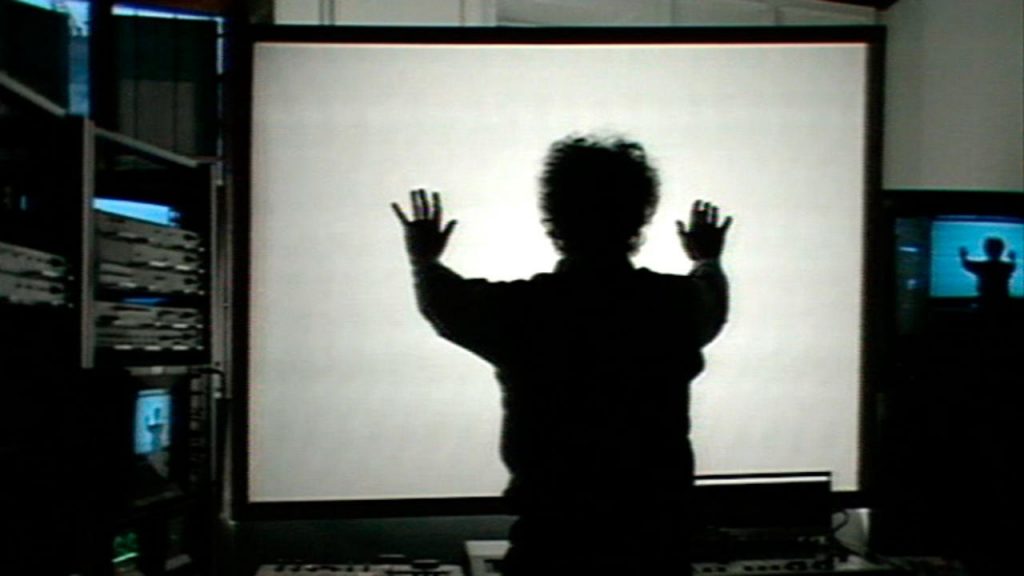In the following piece I make several references to Fabrice Ziolkowski’s article The Passion According To Jean-Luc, which appears on pages 48-49 of On Film issue #12. It may be helpful to track down a copy for comparison or further illumination on the subject of Godard’s Scenario Du Film Passion.

More than any other filmmaker Jean-Luc Godard has dedicated his entire life to the cinema. His films, on video or otherwise, features or shorts, each pursue the greater meaning and significance the cinema has for society, as well as the role of the artist in the creation of cinema, not to mention how all these varying components both reflect and inform not just the audience but the filmmaker. Godard’s work as a theorist is essential not just to understanding the subtexts of his own films, but those that exist in every celluloid image, past, present and future, and the ramifications of those images concerning the filmmaker.
Consider one of Godard’s videos, Scenario Du Film Passion (1982). Fabrice Ziolkowski compares the image of Godard in the video to the photos of Francis Coppola slaving over Apocalypse Now (1979) and with Adolf Hitler trapped in desperation within his bunker during the final days of the war with Germany. Godard appears reclusive and sounds possessed, not by any evil spirit or demon, but with the cinema. He rambles on, musing as to the origins of studio filmmaking, the process by which the mechanisms of the studio industry came to be, and finally the language of signifiers propagated by this industry that have become a visual short hand within the mainstream consciousness. Anyone familiar with Godard’s writing will not find anything surprising concerning the content of Godard’s babbling. However, the circumstances under which Godard makes his address, the motivating factors behind Scenario Du Film Passion indicate an artist struggling to come to terms with his relationship to a medium in which he has worked his entire life.
Scenario Du Film Passion was taped entirely in Godard’s home in Rolle Switzerland. His office is cluttered with various wires, audio equipment, cameras, monitors and editing boards. The claustrophobic atmosphere generated by this clutter emotes a dangerous and obsessive desperation. On the monitors play a number of videotapes that represent a visual sketch of Godard’s film Passion (1982). But Godard does not provide a clarifying narration for his visual sketches, opting to discuss instead the correlation of the filmmaker to the very process of making the film. Interestingly, Godard shot his visual sketch after the fact, presenting the spectator with the customary process of film production reversed. Passion began as a script by Godard, translated to filmic images by himself and Raoul Coutard. Now that Passion is completed, Godard is reversing the process, taking the visuals (the video sketches) and translating them into text (Godard’s own “narration” that runs throughout Scenario Du Film Passion).
It’s important, or maybe even essential, to place Scenario Du Film Passion in a broader context. After Godard’s near fatal motorcycle accident, he was unable to make films until the second half of the seventies. His position in International Cinema and his critical voice had been somewhat lost or demeaned by his absence. Upon returning to the cinema, he entered a medium that had become much more commercial, and much more concerned with the probability of profit. Though this was always the norm in the mainstream of cinema production, the underground independence upon which Godard had thrived before had diminished, fading almost entirely by the eighties. This is the catalyst for the critical stance Godard takes toward the cinema in Scenario Du Film Passion. His dialogue in the film is an attempt to map the landscape of a film environment that he himself struggles to understand; that plants within him the seeds of self-doubt and a doubt in the medium. What’s essential to the navigation of contemporary cinema that Godard undergoes in Scenario Du Film Passion is his attempt to, as Ziolkowski puts it, “reverse the process with the film finished”.
The mainstream budget, schedules and casts of the “Second New Wave” were alienating to Godard, forcing him to approach cinema with tactics less reflexive, utilizing a subtlety he had not employed since the sixties. The doubt and isolation he experienced as a result of these conditions provoked Godard to create Scenario Du Film Passion in place of actually appearing as a speaker at The American Film Institute’s Third Annual National Film & Video Festival; an act of what may be considered self-preservation, but certainly a genius maneuver of art reflecting life. The act of making Scenario Du Film Passion proposes a solution to the superficiality of contemporary cinema that realigns the filmmaker as the author of a work in film. Godard the filmmaker has created a video in which he sketches a film he has already completed and muses as to how he, as an artist, is reflected and informed by the film with which the video is concerned. This links Godard in the mind of the audience with his film, and forces his audience to reassess all the films at the film festival with regards to how he maps out the correlation between a film and its maker. Godard offers no final solution to the problem that still plagues the cinema today, but enlightens his audience so that they may begin to ask the right questions and make the precise demands upon film that will return the medium to the artist, not the broker or the distributor.
